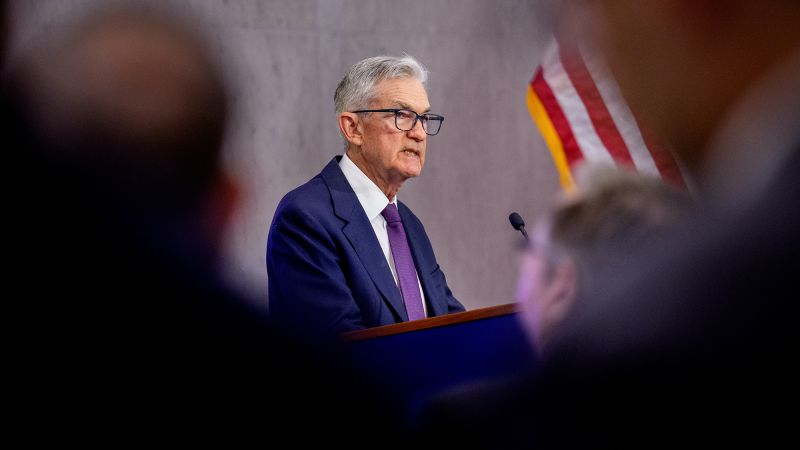In recent news, President Donald Trump held a significant meeting with Federal Reserve Chair Jerome Powell on Thursday, marking their first interaction since Trump began his second term. During the discussion, Trump expressed his belief that the central bank is currently “making a mistake” by not reducing borrowing costs, an action he thinks would benefit the economy. However, Powell maintained that any forthcoming decisions related to monetary policy will be determined solely based on economic data and not the president’s personal preferences.
This meeting at the White House took place at Trump’s request and followed a period characterized by persistent critiques from the president about Powell’s leadership at the Federal Reserve. Notably, Trump has previously labeled Powell as a “fool” and “a major loser,” expressing frustration that the Fed has not lowered interest rates as promptly as he would prefer. His sustained criticism appears to stem from a desire for more aggressive monetary policy that aligns with his administration’s economic goals.
In a subsequent briefing, White House press secretary Karoline Leavitt confirmed the meeting, noting that Trump articulated his concerns that the current interest rates are positioning the U.S. at a competitive disadvantage compared to nations like China. Leavitt emphasized that the president has been vocal about this issue, not only during public statements but also in private discussions. Trump’s insistence on lower interest rates reflects his broader economic strategy aimed at stimulating growth.
It’s important to mention that Jerome Powell was appointed by Trump to lead the Federal Reserve in 2018, a position he will hold until his term concludes in May 2026. Throughout the tumultuous relationship between Trump and Powell, the Fed Chair has largely refrained from responding to the president’s critiques. He consistently emphasizes that the Federal Reserve’s decisions are based on rigorous analysis of economic indicators, with the dual objectives of maintaining stable prices and achieving maximum employment.
Interestingly, Powell has conveyed that he has never actively sought a meeting with any sitting U.S. president, contrasting with the typical dynamics that might exist between federal leaders. He pointed out, “I don’t think it’s up to a Fed chair to seek a meeting with the president,” further establishing boundaries regarding the independence of the Federal Reserve. This perspective aligns with historical views about the autonomy of financial institutions from political influence.
The last documented meeting between Trump and Powell occurred in 2019, suggesting a gap in their direct communications. Recently, while Trump continues to criticize the Fed for not acting swiftly enough in terms of interest rate adjustments, his tone has softened. He has shifted away from broader calls for Powell’s resignation, reconciling that firing him could lead to instability in the financial markets. In an interview, he hinted that he would be able to “change” Powell soon enough.
This more measured approach from Trump is thought to have been influenced by warnings from senior administration officials regarding potential chaos in financial markets if he were to dismiss Powell. Investors are particularly sensitive to the Federal Reserve’s independence, a principle that many economists deem vital for the health of the U.S. economy. It is noteworthy that even as Trump appears to have temporarily calmed his rhetoric, the administration may still explore ways to alter the leadership structure at the Fed.
Complicating these dynamics further, the Supreme Court recently ruled that Trump does not need to reinstate senior officials he fired from independent federal labor agencies. Although government officials have stated this ruling does not directly impact the Federal Reserve, the implications could be significant depending on future decisions and legal interpretations. The Court noted the unique structure of the Federal Reserve, likening it to historical institutions, indicating the institution’s intricate relationship with the government and market mechanisms.
The ongoing dialogue between the White House and the Federal Reserve is emblematic of broader themes in U.S. governance and economic policy, reflecting the intricate balance between financial independence and political pressures. The path forward will likely continue to evolve as the economic landscape shifts and new decisions emerge from the Federal Reserve.



